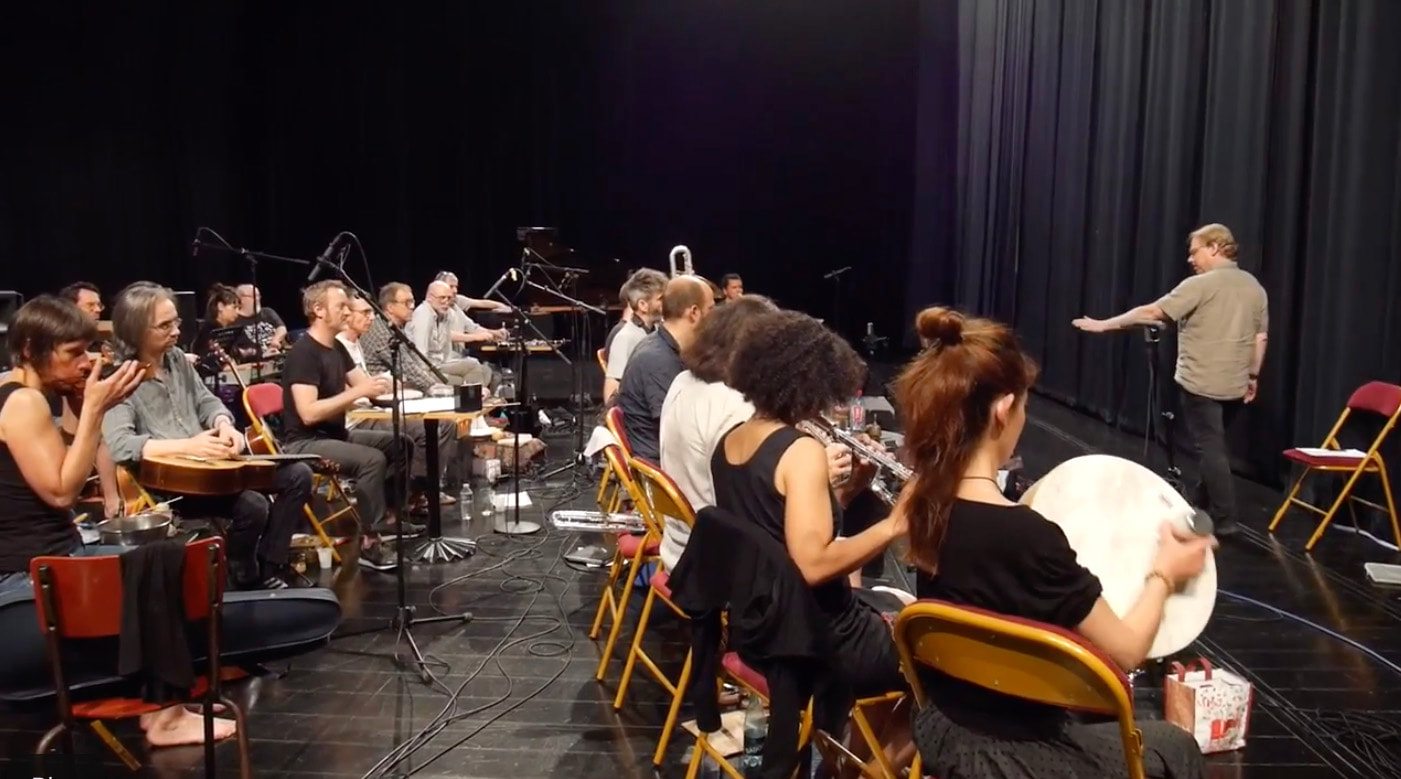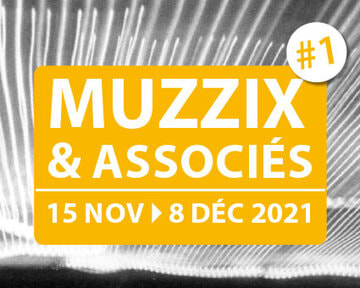Q&A with Michael Pisaro-Liu and Barbara Dang
about Tombstones
about Tombstones
|
“I wanted music that was close to ‘something natural’. Evolution of the melodic lines at several speeds, in other words, independence between each other, no voluntary sound event, no climax, no drama, everything could appear as accidental.” (Barbara Dang)
"It feels natural, halfway to the singer just singing to themselves." (Michael Pisaro-Liu) |
|
Yuko Zama (YZ): These songs of Tombstones are very unique and intriguing to me. They do not have a conventional form of 'songs', yet somewhat conjure up a poetic beauty that moves me quietly (like songs are able to).
Michael, how did you come up with the idea of the Tombstones project, in which you combined experimental and indeterminate natures and the concept of 'songs'? Michael Pisaro-Liu (MP): The Tombstones grew out of a simple desire to write songs, and the feeling that I was ready to do it in my own way. Its predecessor in my work is the harmony series - which is a series of 34 chamber works that are open to any instruments. The harmony series pieces have structures, but hardly any restrictions as to what notes can be played. This kind of openness led to many beautiful situations in performances, where it felt like a piece just came together more or less by itself. It seemed like the next step would be to make songs that would do the same thing. But given that I wanted the voice to sing words and notes, they had to be structured in a completely different way. YZ: In your score for Tombstones, voices and instruments are instructed to play “softly”. I remember that you instructed the “softness” of the tones in your score for harmony series (2004-2006), too. What did you aim to bring out via the performer’s realization with the softness of the tones in these pieces? MP: When I look back on the use of this word at the time, I think it had more to do with a style of softness, than an actual dynamic. With many instruments, when you ask for something soft, it can get very quiet indeed. With Wandelweiser in a certain period you could say that there was almost no limit to how quiet things could become. The harmony series had an element of that thinking. But with the Tombstones there are limits set by the voice itself. What we will hear as “quiet” really depends on the singing style of the person. Sometimes it is an effect that depends more on the voice’s register – or it can be the color of the voice, and the way in which the words are pronounced, and so on. But the effect, when it is well performed, as it is by Maryline Pruvost here, is not emphatic. It feels natural, halfway to the singer just singing to themselves. YZ: Barbara, how did you come up with the idea of realizing and recording these 11 songs of Tombstones?
Barbara Dang (BD): During the last ten years I have been developing a set of experimental pieces (Andriessen, Cage, Cardew, Cowell, Feldman, Lucier, Satie, Pisaro, Frey, Sfirri...). Then, Tombstones is part of my experimental research around minimalist music and free instrumentation scores. At the beginning there was just a concert. And then, we had the opportunity to record Tomsbtones during a residency at GMEA. In the Unmoon score (*see above), Pisaro talks about a "month of dust". So I liked the idea of listening to delicate dusty music rather than listening to a dusty record! YZ: How did you choose these particular six musicians from the Muzzix collective to collaborate with for this Tombstones project? BD: I met Yoann Bellefont, the double bass player, during our musical studies. We exchanged a lot about contemporary music. Ivann Cruz, Raphael Godeau, Peter Orins, Christian and Maryline Pruvost know Pisaro-Liu's music well. They have played his pieces several times and have already met the composer. In particular in Radiolarians, a piece that Pisaro wrote for the large ensemble of Muzzix which gathers about thirty musicians. I also work regularly with them in several improvised music ensembles. The choice of these musicians was also determined by the instrumentation required to play Tombstones and a certain connection between them all and popular music. YZ: Did you have a particular idea and concept for the realization of the pieces in mind and give the other musicians clear directions? Or was the production process developed via group discussions among all seven musicians? BD: I wanted music that was close to "something natural". It wasn't really a choice because this is something that this kind of music requires. Evolution of the melodic lines at several speeds, in other words, independence between each other, no voluntary sound event, no climax, no drama, everything could appear as accidental. It was therefore my impulse to give this natural spirit to the production process. But it was also somehow collaborative because various orchestration options were discussed together. YZ: When I listened to your realization of Tombstones for the first time, I instantly loved it since it brought out the poetic beauty of the songs so naturally while containing a mysterious ‘otherness’ in an unconventional style. It made me appreciate these songs even more deeply, very different from the Human Ear Music version. What kind of results did you and your musicians aim to attain when realizing these Tombstones pieces? BD: I didn't really listen to the Human Ear Music version before recording our version. Anyway, I was very attached to the idea of getting an exclusively acoustic sound, creating an intimate listening experience (a bit like chamber music), and keeping the traditional musical relationships of pop music (vocal leads and accompanied melodies). YZ: As the composer, Michael, how do you feel about this realization of Tombstones by the Muzzix musicians? MP: I love what Muzzix does with the songs. It is from the same score as on the 2012 Human Ear Music recording, but with a different, more chamber music influenced approach and with transparent arrangements of the songs. And the ensemble sounds so comfortable playing them! Some of the members of the group, and especially Barbara, have played quite a lot of my music, and I have worked with them several times. Muzzix (which can be various sizes, but has a core of 15-20 musicians) is quite diverse in their musical backgrounds: they can all improvise (in various styles), and most of them read very well, but only a few are essentially classical musicians. There’s quite a mixture of instruments and playing techniques. The (sub-)group that Barbara put together is very cohesive and also quite a nice collection of characters! YZ: When you wrote these songs, did you expect a realization like what the Muzzix musicians interpreted and performed? MP: The realizations have the clarity of classical chamber music, but they also feel spontaneous, like a small jazz group meeting in a familiar setting. They find a beautiful balance between austerity and lushness. In a context where sometimes very little seems to be happening, there are moments that take your breath away. With this kind of music, you can imagine realizations, but you can’t anticipate the wonderful intricacies produced by a special group like this one. YZ: I heard that you wrote a piece 'Radiolarians' for the Muzzix musicians, which they are performing in Lille this December. Can you please describe this piece a little bit? MP: Radiolarians was written in 2018 for the “grand orchestre” of Muzzix (their largest collection of more than 30 musicians) - who played the piece for the first time that year. We made a recording the following summer (2019), which should be released next year. In December there will be an even larger group performing - probably over 50 people. It’s a modular work. The score is a collection of fifteen pieces (for open ensembles), which can be assembled in any order (including repetitions and overlapping). Each piece is derived from drawings of Radiolaria by German zoologist Ernst Haeckel (from his book Kunstformen der Natur, 1904). These protozoa have radial skeletons that I attempted to “transcribe” into experimental musical forms. It is expressly meant for Muzzix, or groups like them, that can move easily between open and more fully notated arrangements. It takes some work to organize a performance and it’s always a bit of an adventure to play the piece! But the congenial organization of the Muzzix collective makes the whole process so satisfying, both musically and personally. (Interview conducted by Yuko Zama in September-October 2021)
|
|
Michael Pisaro-Liu - Tombstones (Barbara Dang & Muzzix) (elsewhere 017)
*CD is available on this website and Bandcamp (CD release: October 19) *Digital albums (16-bit AIFF and 24-bit HD FLAC) are also available. |







